Subtypes
Zanzibar (Kivuuli Subtype)
The Zanzibar Kivuuli shows features of both the Tundra and the Dykuma and is theorized to have risen from interbreeding between the two. Mostly found in cold deserts and milder tundra rather than polar regions like the Tundra Kivuuli.
Their fur is short, but very dense and thick and fluffy, having a coarser outer layer and a soft and fluffy inner layer.
The spine lengths are very similar between the genders, like a Desert Kivuuli, and they have both the Desert Kivuuli like webbed dewclaw and downward pointing Tundra Kivuuli spur.
They are small, wirey, fast, and nomadic, skittish, and elusive. They live in small colonies that follow their prey from place to place.
They come in faded browns, creams and sometimes faint goldens with faint spotting being the most common. The coloration is somewhat similar to the now extinct Zanzibar Leopard, and thus that is how the breed got its name.
Zanzibars are fairly rare, since Desert and Tundra Kivuuli only cross paths during climate changes; and the Zanzibar have far enough removed from both breeds to be considered a breed of their own rather than just a cross.
They are often called Zanzi or Zanzis for short.
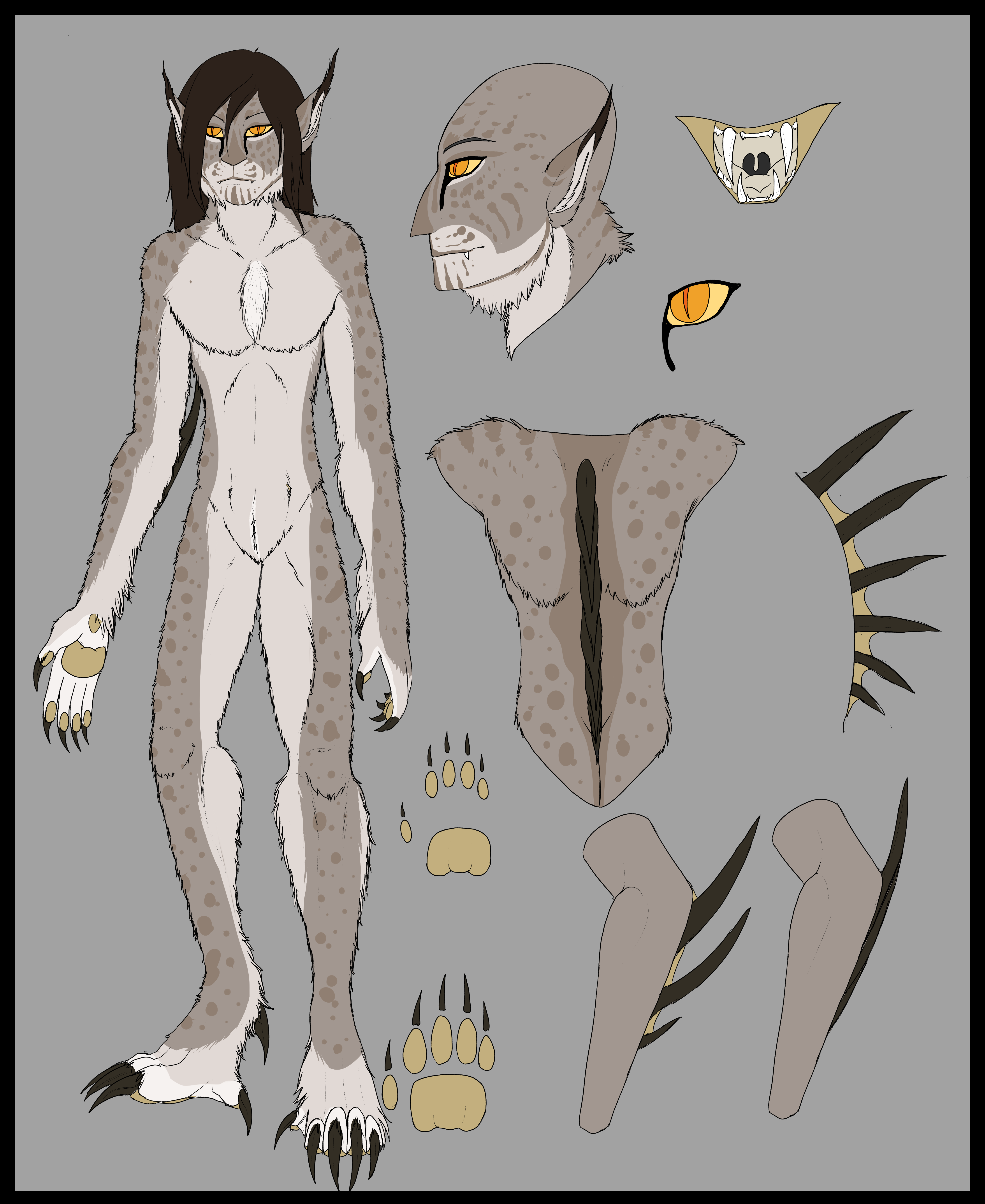
Oriental (Kivuuli Subtype)
With colors and markings resembling oriental cats, they have sleek, silken fur with iridescence. They share a common ancestor with the rare Ember, and prize beauty over strength. Their colors are usually browns and blacks, but can be cream. Their eye color is usually bright blue.
One of their more distinctive features is that they have tusks as well as long fangs.

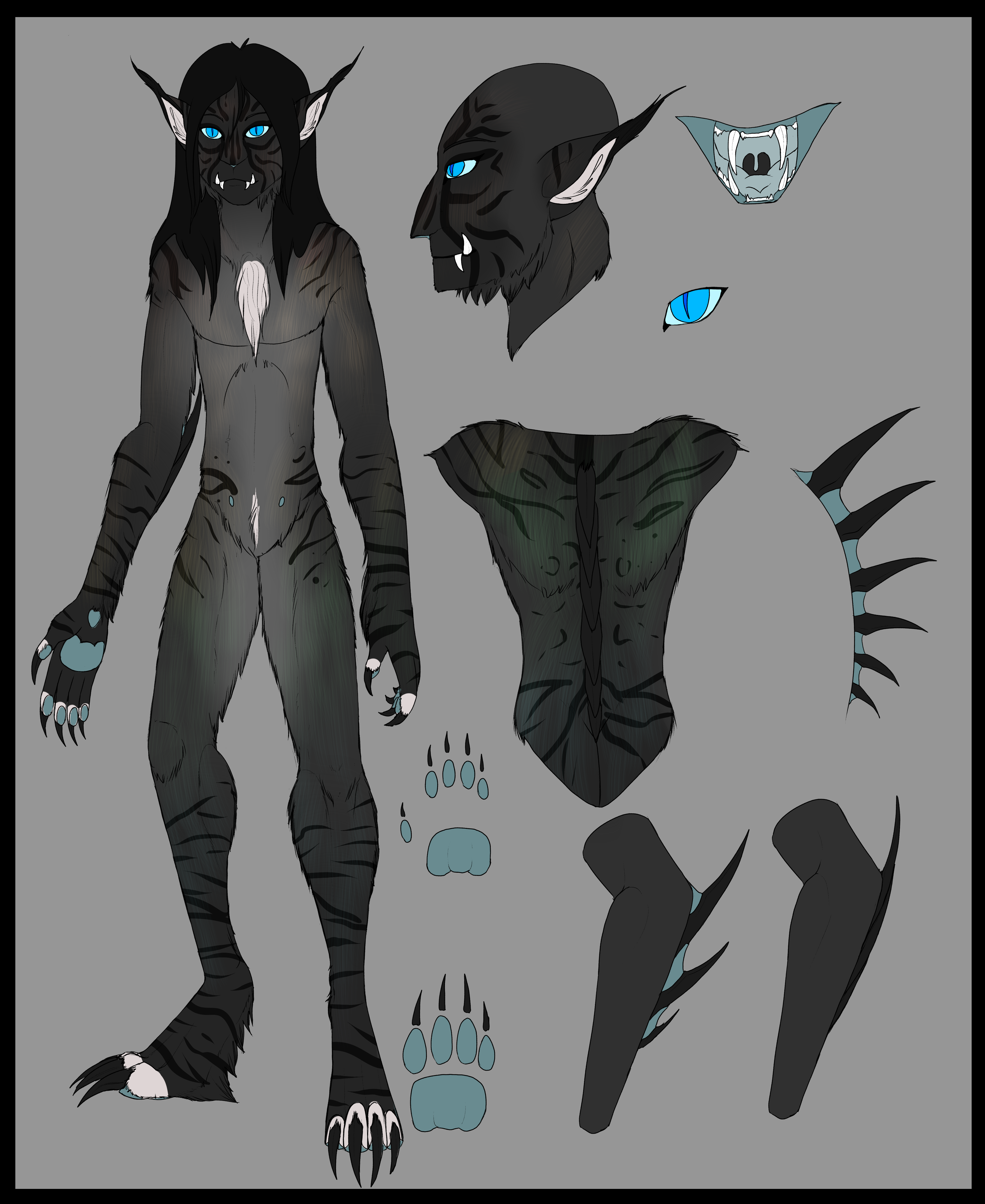
Lippizan (Kivuuli Subtype)
Named after a breed of horse, ‘Lippizan’ Kivuuli are usually white or desaturated, or pale grey in coloration with grey markings usually taking on a dappled or cloudy look. They usually have dark markings around their eyes. Their hair will also whiten along with the rest of them, but always matches their fur color. Aside from Maltese, Lippizan Kivuuli are the only ones known to have white hair. Blue, green, and yellow are the most common eye colors for this breed. Their build is like a normal Kivuuli, with no distinguishable size or temperament difference and is thought to be due to a color mutation that became common in certain parts of Between.
They earned their name because they age and grow much like a Lippizanner horse. When they hatch, their coloration is normal. They are black, with slightly darker markings, but as they age their fur will gradually lighten until they are all white or pale gray. Elders often lose all markings and are completely white aside from a slight darkening around the eyes and where the fur thins.
Their skin is black instead of colored, so where the fur is thinner the darker skin shows through. This means their pads, membranes, and often tongues and such are black or varying shades of of black or dark grey. At birth, the pads and skin are relative to their eye color like regular Kivuuli but darken to black as the fur lightens to white.
Feathering is very common among Lippizan. It always matches their fur color.
Lippizan Kivuuli are pretty rare, only appearing in a few colonies in remote and untraveled parts of Between. The color mutation that caused this breed is easy to dilute out and will vanish within a generation or two. When mixing with other types of Kivuuli, the color change is often far less pronounced, and by the third generation it’s gone entirely, and it doesn’t carry easy. As such, they usually only show up where Colonies are isolated and don’t interbreed with other colonies. There are, however, several Colonies of this odd white Kivuuli even if the regular black variety is not aware of their existence.
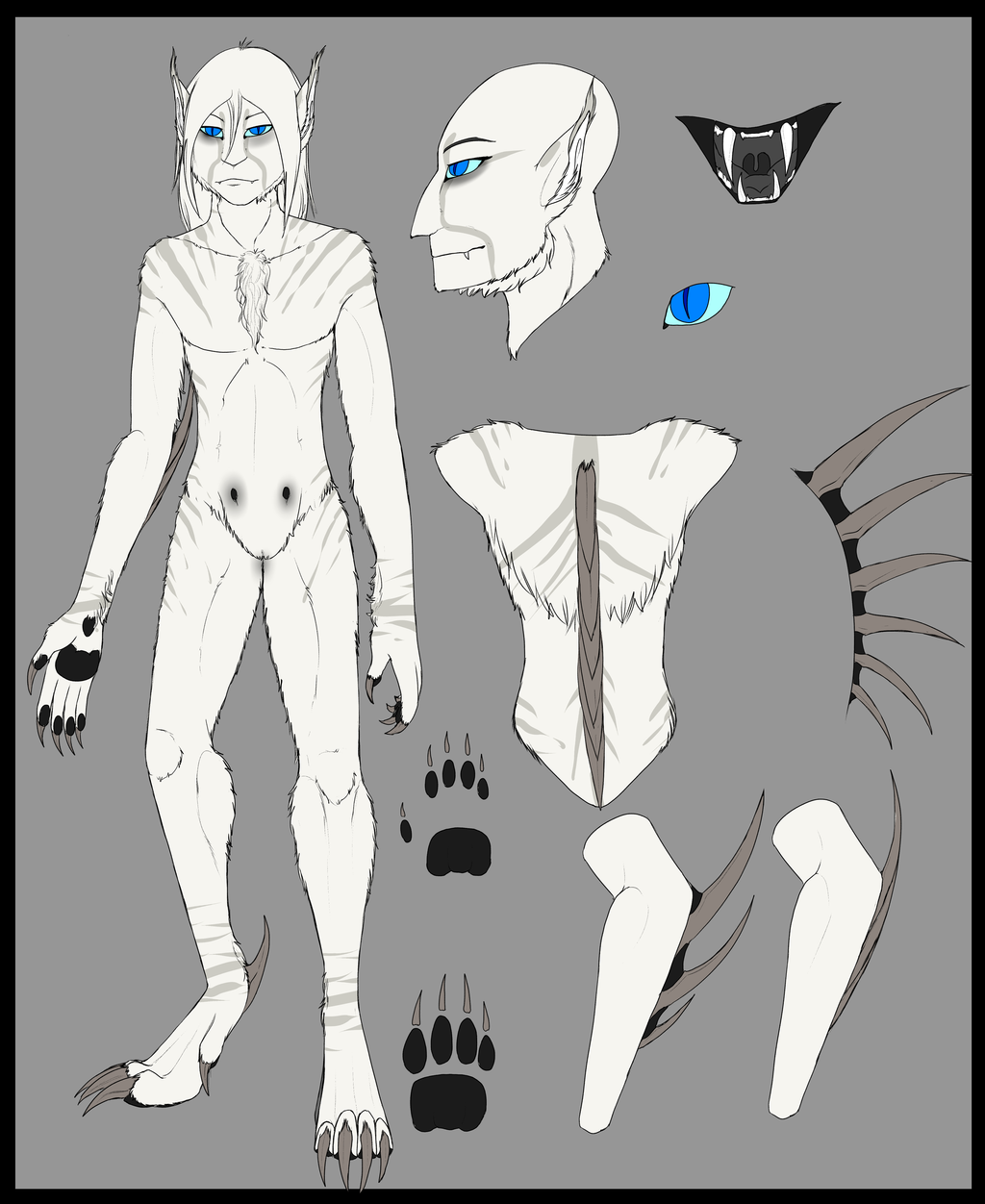
Met'saa (Kivuuli Subtype)
The Met’saa is an uncommon variant of Kivuuli found in forested and jungle environments. They are known for their reddish browns and warm colors. Their dewclaws are slightly more dexterous and less vestigial and aid the Met’saa Kivuuli in climbing trees. Named Met’saa after the Finnish word for Forest, this Kivuuli is perfectly suited to its environment.
Met'saa live in large Colonies that are split into small sub-packs. They have their central grounds, where the alpha female, few beta males and the Elders all live, and various groups that settle around the Colony’s territory. These small sub-packs consist if a beta female, 1 or two lower ranking females, and several males and any kits that group has. Almost like one tribe with many villages. Like all other Kivuuli, they live with the land and work hard to uphold the balance of nature.
Met'saa stand around 9 feet even for males, and 9'5"-9'8" for females. About average for the Kivuuli race.
The most striking thing about the Met'saa is their beautiful coloration. Their fur appears in various shades warm reddish brown, with the tips being black and the undercoat being paler. The fur is spikier than a regular Kivuuli, and forms a bit of a pseudo mane down the back and shoulders in both genders. Their hair always matches their fur both in texture and color. They usually have markings resembling a marbling or tabby effect, and usually black or dark reddish brown against their reddish coat.
Met'saa are very wild and can be very elusive, though like any Kivuuli, they are incredibly curious. If you show no signs of being a threat, a Met'saa will approach you to investigate.
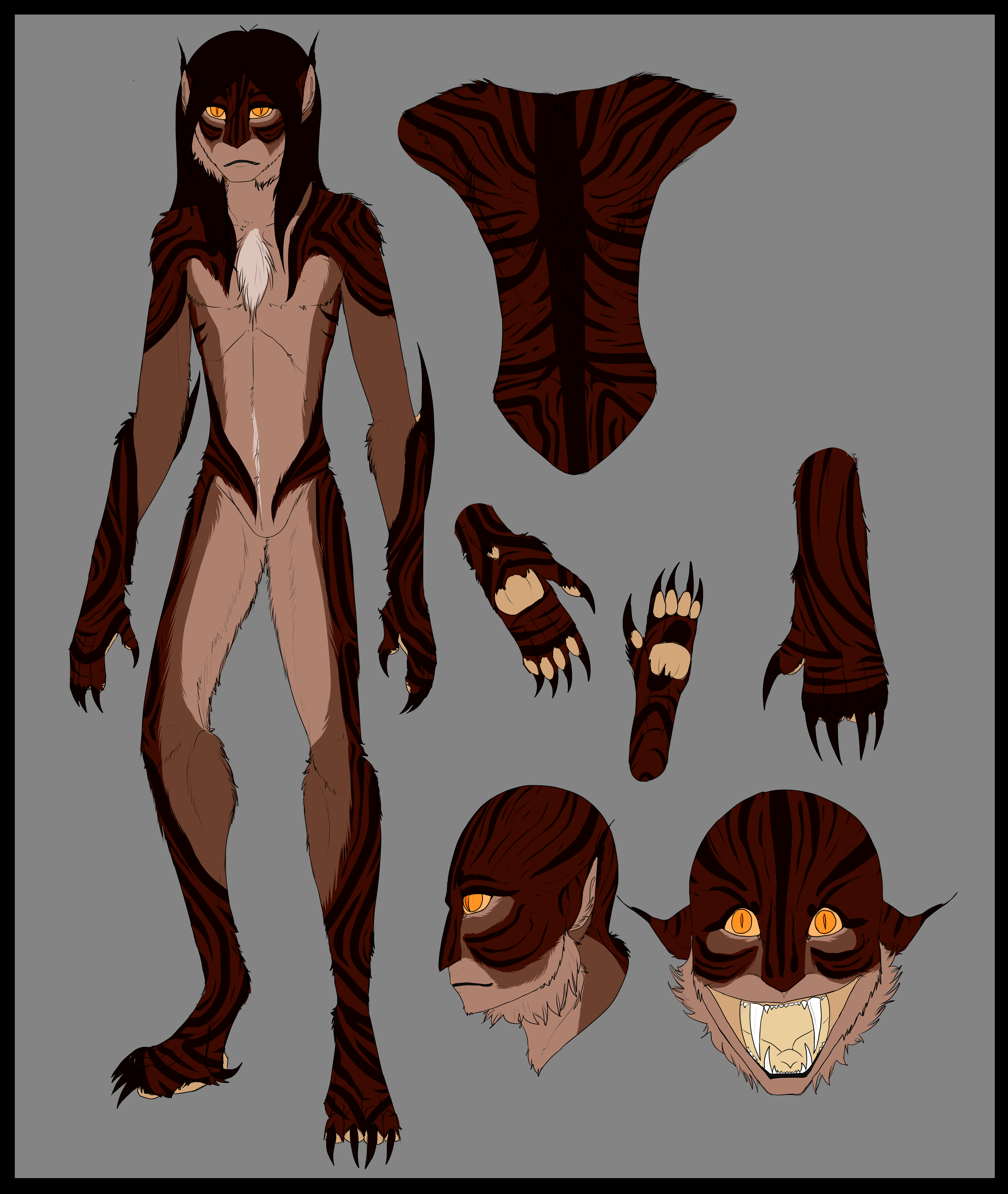
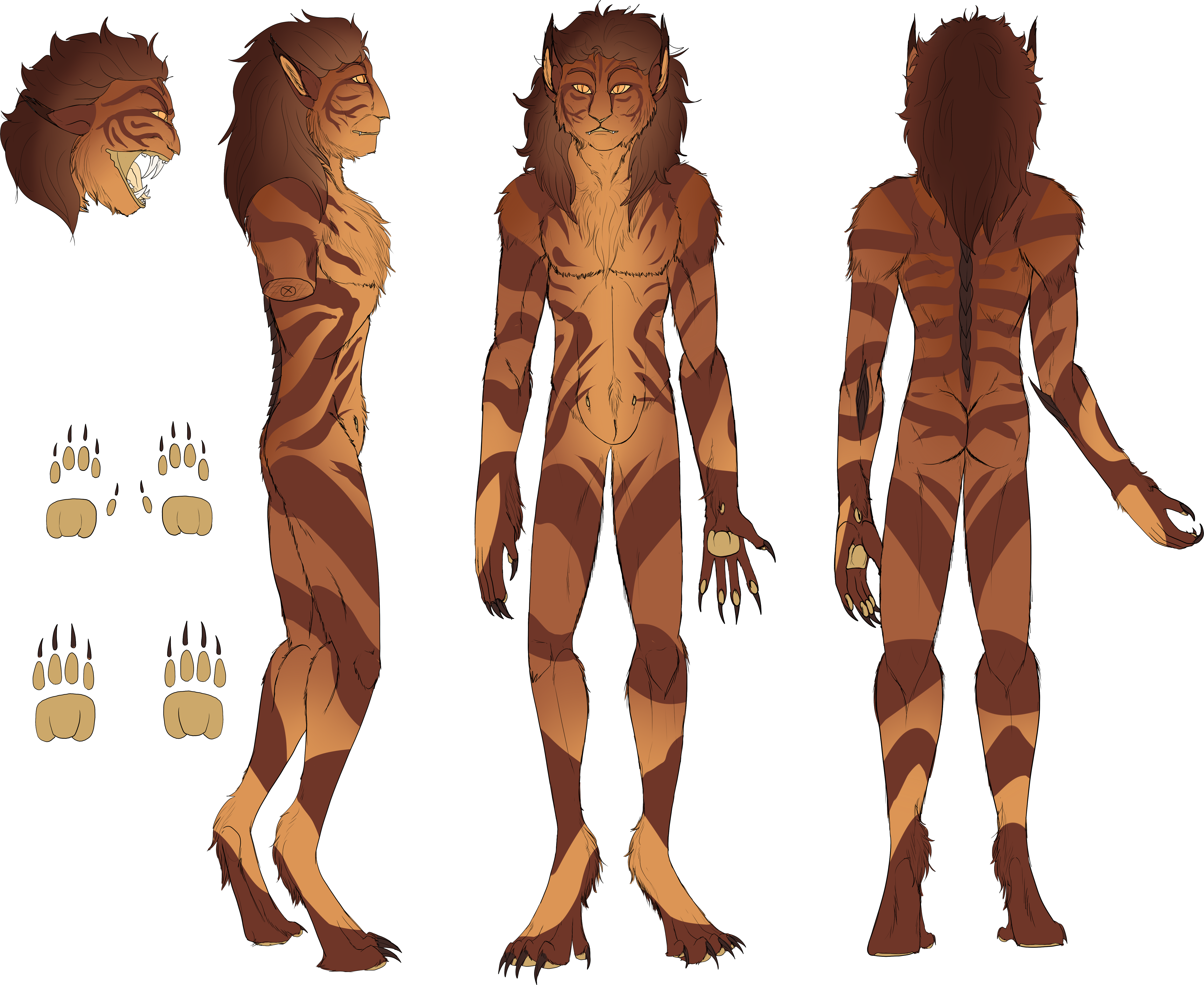
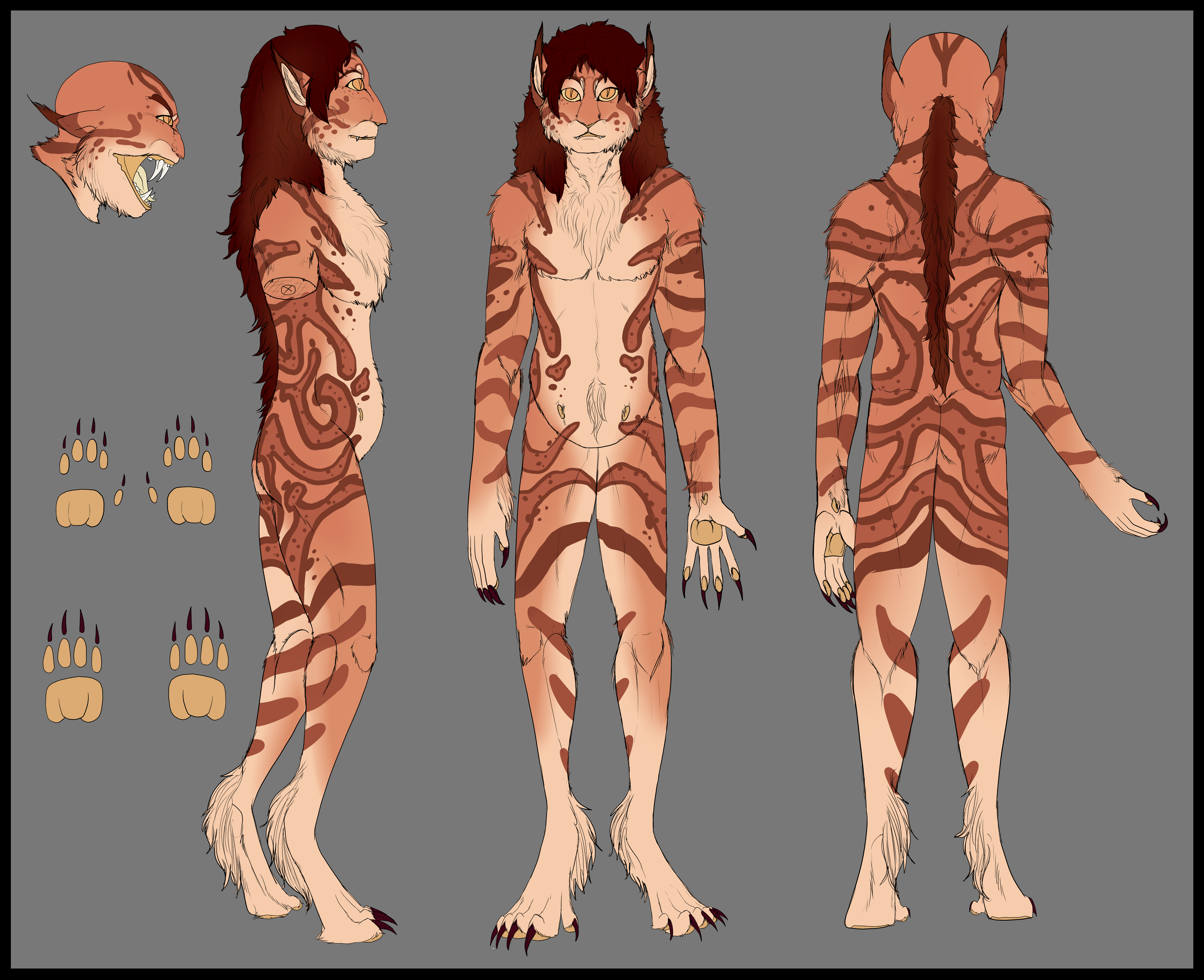
Fancy (Kivuuli Subtype)
There is a wide spectrum of Kivuuli commonly called "Fancy" Kivuuli. Like the Fancy rat, the fancy doesn't mean fancy as in looks, but rather fancy as in Fancied.
A race of powerful Celestial beings got a hold of a Time Core, and created a special pocket dimension that allowed Kivuuli generations to pass as quickly in comparison to their time as generations of cats or dogs pass for us. Within the pocket dimension is a huge breeding facility where selective breeding takes place to create strange new types and colors for Kivuuli.
The Celestials were a species that thought of themselves as higher beings, and any creature not as powerful of them was seen as no more than animals. Humans would rank among those looked down on by these beings. So, of course, they thought of them as common beasts and they were bred to be pets, workers, and companions. Most were sold as eggs, with magic to tell the gender, with long pedigrees behind them. Only males were sold unless one was experienced, since females are more aggressive and unpredictable, and only breeders kept females. Many times, those kept for breeding were kept in cages with no freedom whatsoever, to avoid their different varieties from mixing; they wanted to completely control what genes expressed and which ones didn't.
They are bred for various colors and body shapes for different tastes and purposes, and are naturally incredibly docile through their selective breeding.
This practice is looked down on by many Celestials, and recently those against it have started working on stopping this deplorable practice. They, rightfully, claim that it is slavery and that no sapient creature should be kept for breeding like a common beast. While not mistreated, the Kivuuli in this program were isolated and unable to behave as a proper Kivuuli would.
As such, some of these rare 'Fancy' Kivuuli have been seen recently, having been rescued by those against the breeding program and adjusted for life with free Kivuuli to take them in. Being an adaptable species, those rescued; even adults, generally adjusted with a bit of work and integrated nicely with the Colonies they were introduced to.
There has been great success with integrating freed 'Fancy' Kivuuli into existing colonies. Kivuuli are highly social and very willing to help, or adopt any kits that are rescued and raise them alongside their own.
The Celestials are losing interest in these Kivuuli, as more and more among their ranks are realizing that Kivuuli are intelligent beings and should not be kept in such a way so it is rumored this breeding program will be done with soon, and more Fancies will be out in the world.

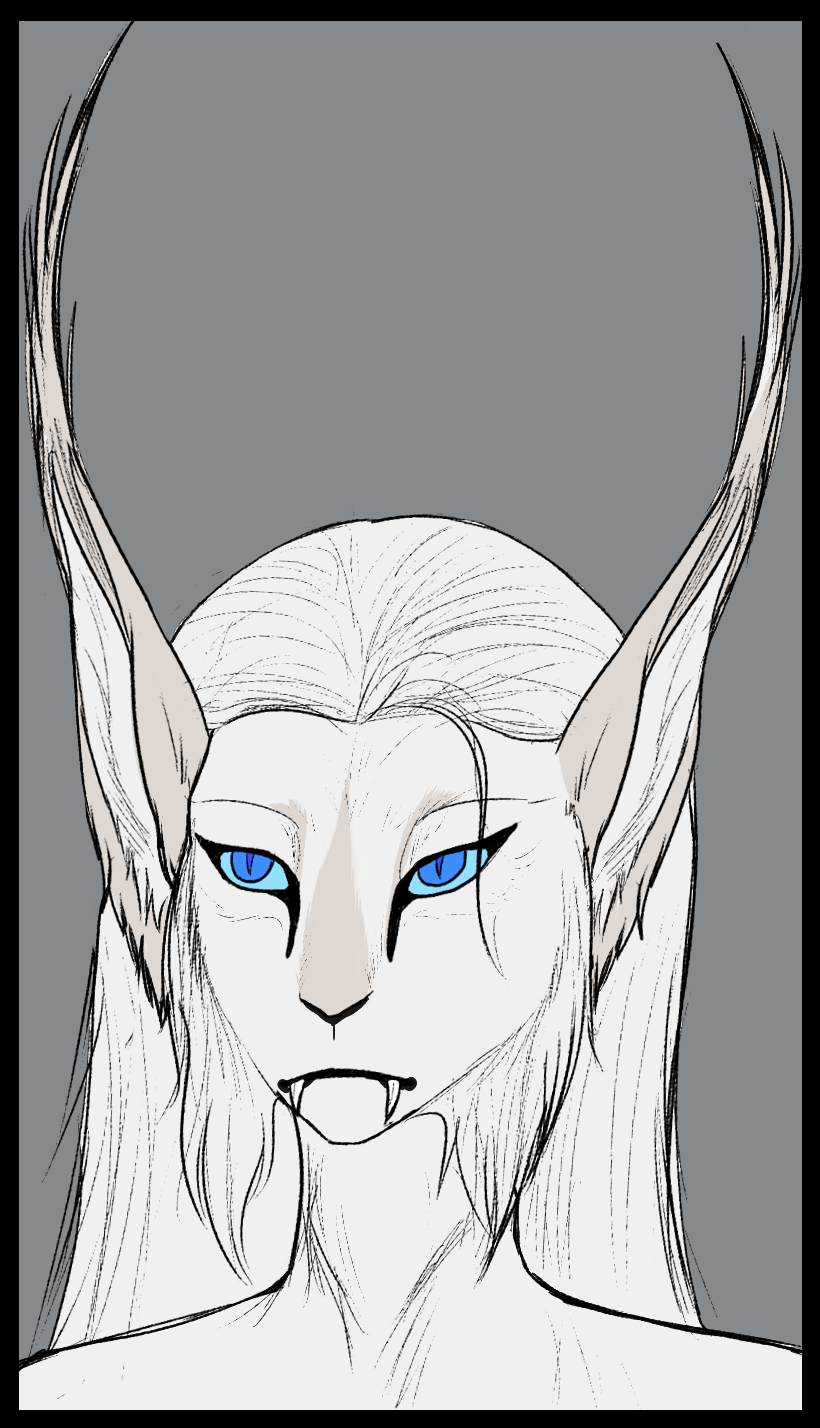
Polar (Kivuuli Subtype)
Extremely rare, mostly pure white, living in polar and arctic conditions. Tall and thick with long fur. Live in smaller colonies than other types.
They are considered a Proto-built subtype, and are only found in the colest of areas. They are the largest of the Kivuuli subtypes. They generally have very small family groups. A female, her mate, and their young. Polar groups never get more than 5 Kivuuli strong.
Polars are the only Kivuuli to do just as well alone as they do in the company of others. They are still social, but do not go mad without a companion.
They are hardly ever seen, but some have been mistaken as yetis.
Their fur is incredibly thick. They are massive, almost 15-16 feet tall as opposed to the normal 9 foot height of the average Kivuuli. Unlike the Tundra, they do not have a summer coat.
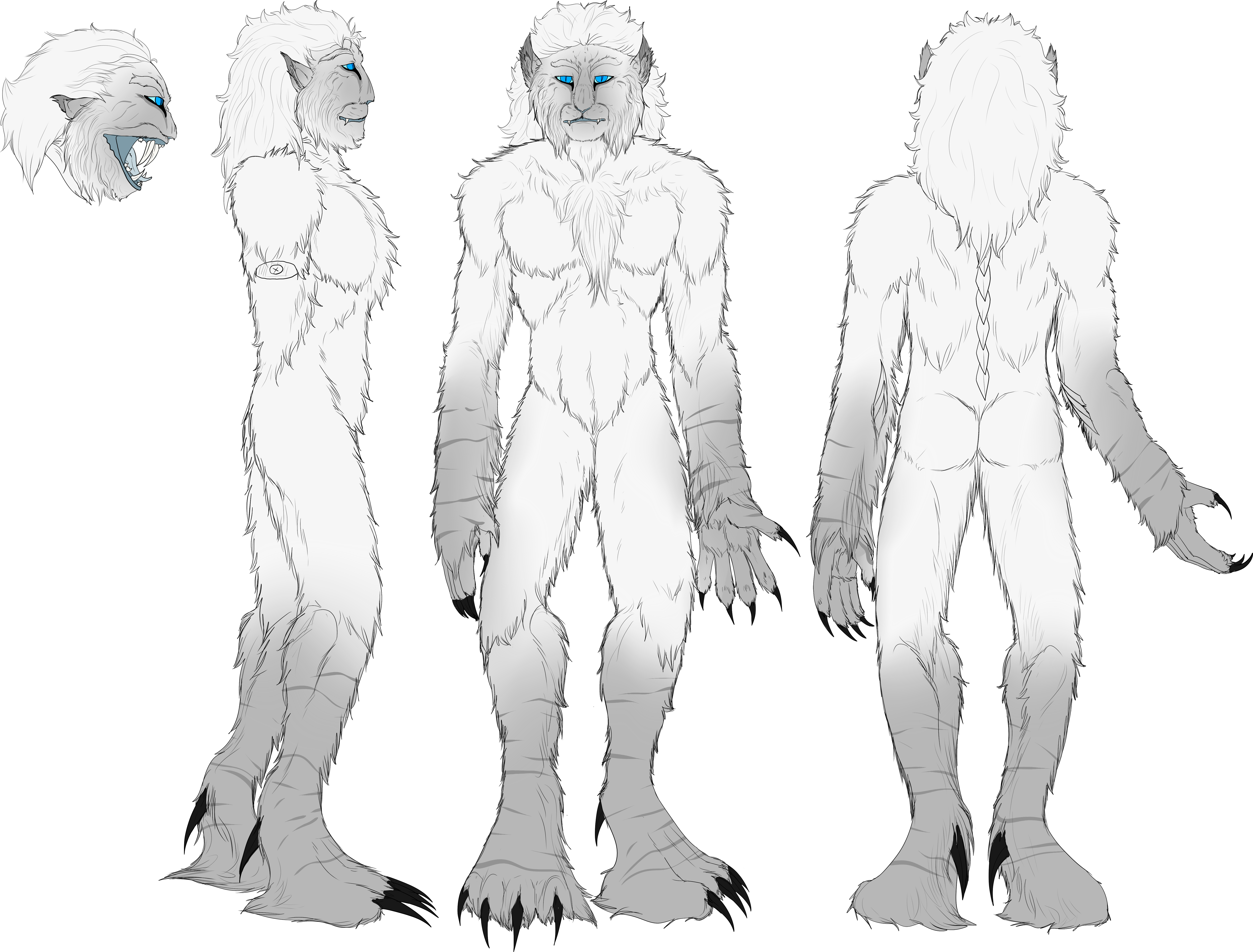
Proto-Built (Kivuuli Subtype)
Protean and Proto-built Kivuuli are similar, so the information is copied between them
The Protean Kivuuli is the most ancient form of the Kivuuli race, and the only known ones to remain are the Protean Met'saa. Any ancestors before the Protean would produce sterile hybrids.
Their descendants are known as Proto Built Kivuuli, and there are four generations. F1 Proto Built Kivuuli have one parent that is a pure blooded Protean Kivuuli, and has a higher chance of passing the unique down to their offspring. A Protean and Normal Built Kivuuli will always pass down the Proto build into the F1 Proto built Kivuuli.
A F2 Proto Built Kivuuli has a F1 parent. A Protean and a F1 will produce another F1.
An F3 Proto Built Kivuuli has a F1 Grandparent.
The F4 Proto built Kivuuli has a great grandparent that is a Proto built Kivuuli. After this generation, the Proto build is bred out completely.
F3 Proto Built Kivuuli are slightly less wild than a pureblooded Protean, and the fur is not quite as thick. The hair becomes less furlike and more hairlike. F4 Proto Built Kivuuli are average sized for a Kivuuli, though still have the Protean build and normal hair instead of furlike hair.
The Protean Kivuuli is completely closed, though I may open up F1 - F4 Proto Built Kivuuli that can only be obtained through MyO events, which will be few and far between, and will likely be the F3 or F4
The Protean Met'saa is said to be the only pure Proto Built Kivuuli left in existence. The very last vestige of the very first creatures that were considered Kivuuli, the last remnants of their ancient ancestors that died out billions of years ago when the smaller, more successful Kivuuli took over and pushed the Protean Kivuuli into extinction. Of course, this wasn’t intentional. It was survival of the fittest and the smaller Kivuuli was far more adaptable. That, and they just gradually adapted and changed to the environments around them.
The Protean Met'saa has almost the exact build of the ancient Protean Kivuuli. They have the ancient build, and all of them have the heel spur and dew claw that the race used to have before it slowly evolved out due to not being used. Over millennia, the spur and dewclaw mostly disappeared... but not for the Protean Met'saa, since they actively use it when climbing trees and traversing the jungle. This feature holds over to regular Met'saa as well, though not as pronounced.
This breed of Kivuuli is extremely rare. They live in small Colonies, and are only present in one world said to be trapped in time, that is mostly heavy jungle and have massive beasts that roam the tree-laden land, though they do go through Between on occasion. Usually the small areas near their jungle homes. While rare, the few that exist thrive in the depths of the primal jungles they exist in. All regular Met’saa rose from the Protean Met’saa, and being more adaptable spread to forests in many worlds while the Protean Met’saa remained in their primordial jungle.
They share some features with the Maltese - the fur-like hair, the mane-like fur down the back. This is because isolation has caused Maltese to display atavistic features - features long buried in their genetics. Features that the Protean Met'saa never lost.
They are extremely reclusive and rarely approach those of other races. While they border on xenophobic, they would rather just run away and hide and never attack. Even other Kivuuli don't know of their existence... or think they are just a myth.
Protean Met'saa spend more time on all fours than modern Kivuuli, and are more wild and feral. Their speech is heavily accented, since their jaws and mouths are formed a little differently. They speak with an odd lisping growl, making them harder to understand even if they have learned your language. Their voices are rougher and more beastial. All Protean Met’saa have the strange mutation that allows their Heartstones to self heal, and thus do not die of age. The reason for this is unknown, and it is thought that the group of Protean Kivuuli they rose from were the very first Kivuuli to show this strange and rare mutation. Some also theorize that it is connected to the jungle they live in, and the odd magic that surrounds it; and still others think they figured out how to cause the mutation. There is one thing that is for sure, though, that this mutation being present in the breed is why they are still around.
They are every bit as intelligent as other Kivuuli breeds, though far more primal in their thought processes, instincts, and actions; they are also reclusive, skittish, and more likely to hide.
Unlike regular Met’saa, Protean Met’saa live in small Colonies. Often consisting of 2-5 females, 5-12 males, and any kits born to them.
Protean Met'saa are huge.
Males stand around 10 feet, where females can stand up to twelve feet tall.
The Protean Met'saa is a closed breed/subspecies of Kivuuli. I won’t likely release any to be adopted, and I won’t allow any to be made due to their extreme rarity.
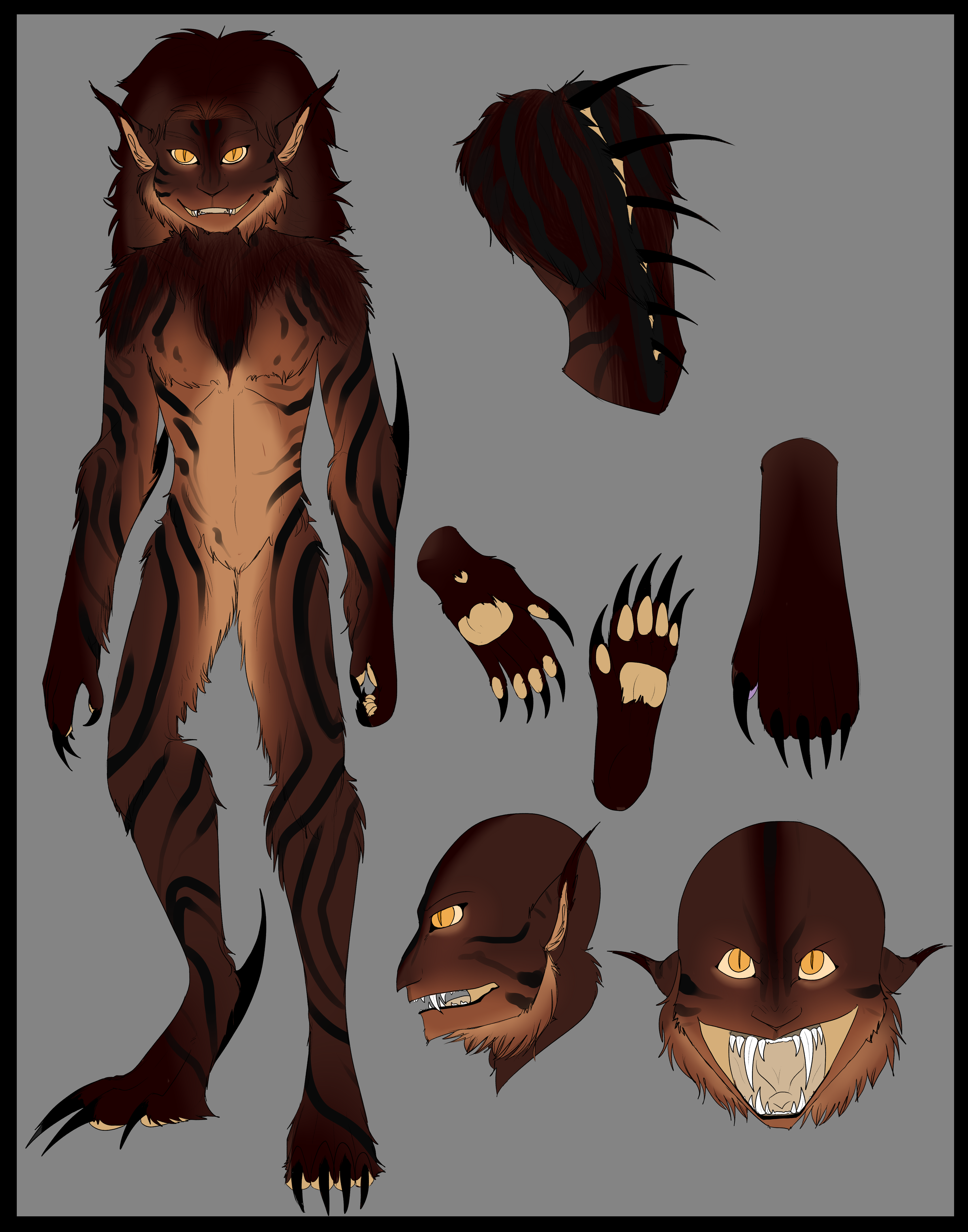
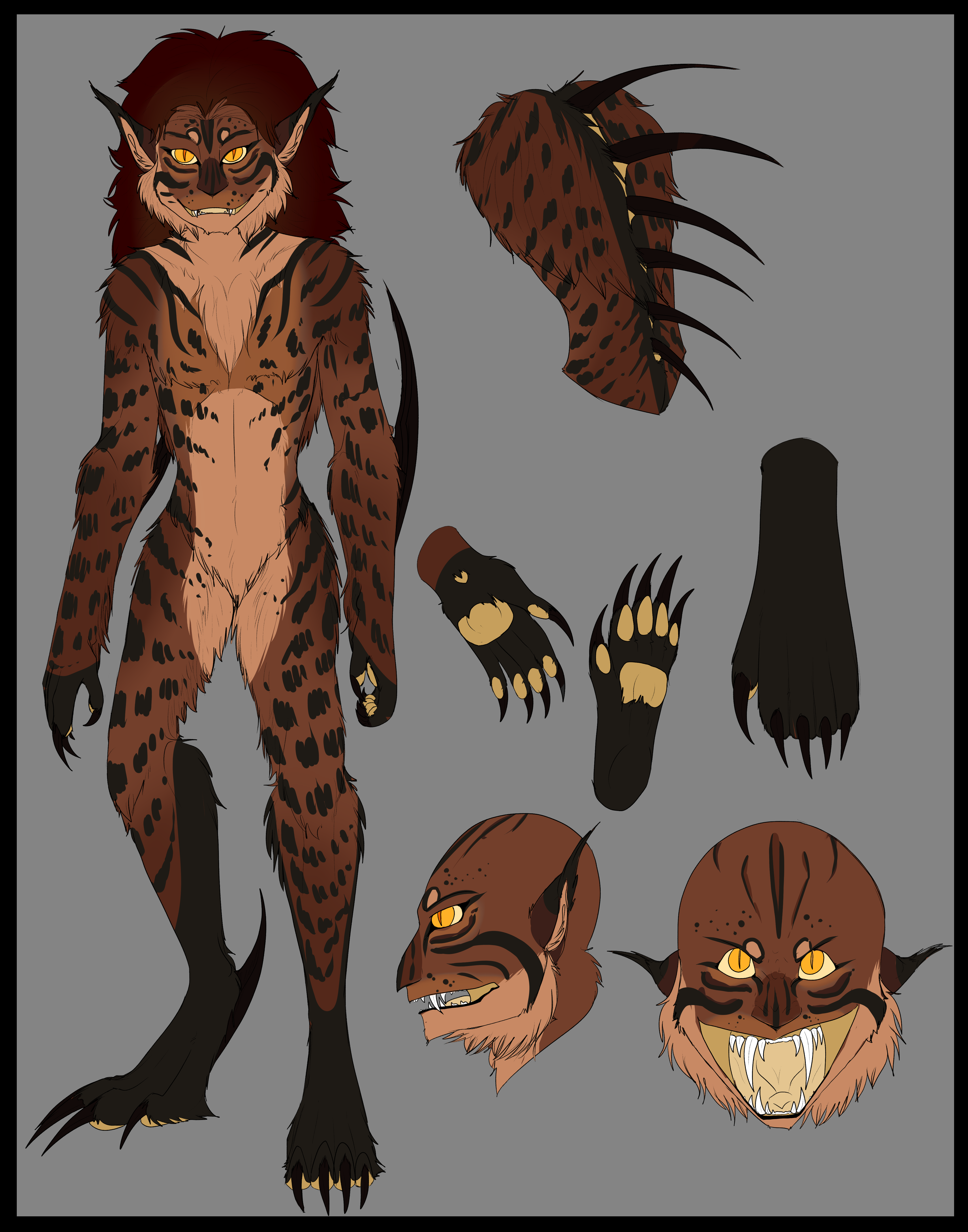
While extinct, this is what the Protean Kivuuli, the original Kivuuli, the most ancient of their variants, looked like. Black, like the common Kivuuli, fanged and wild. Fierce and powerful and big. There are no Proteans left, they're extinct.
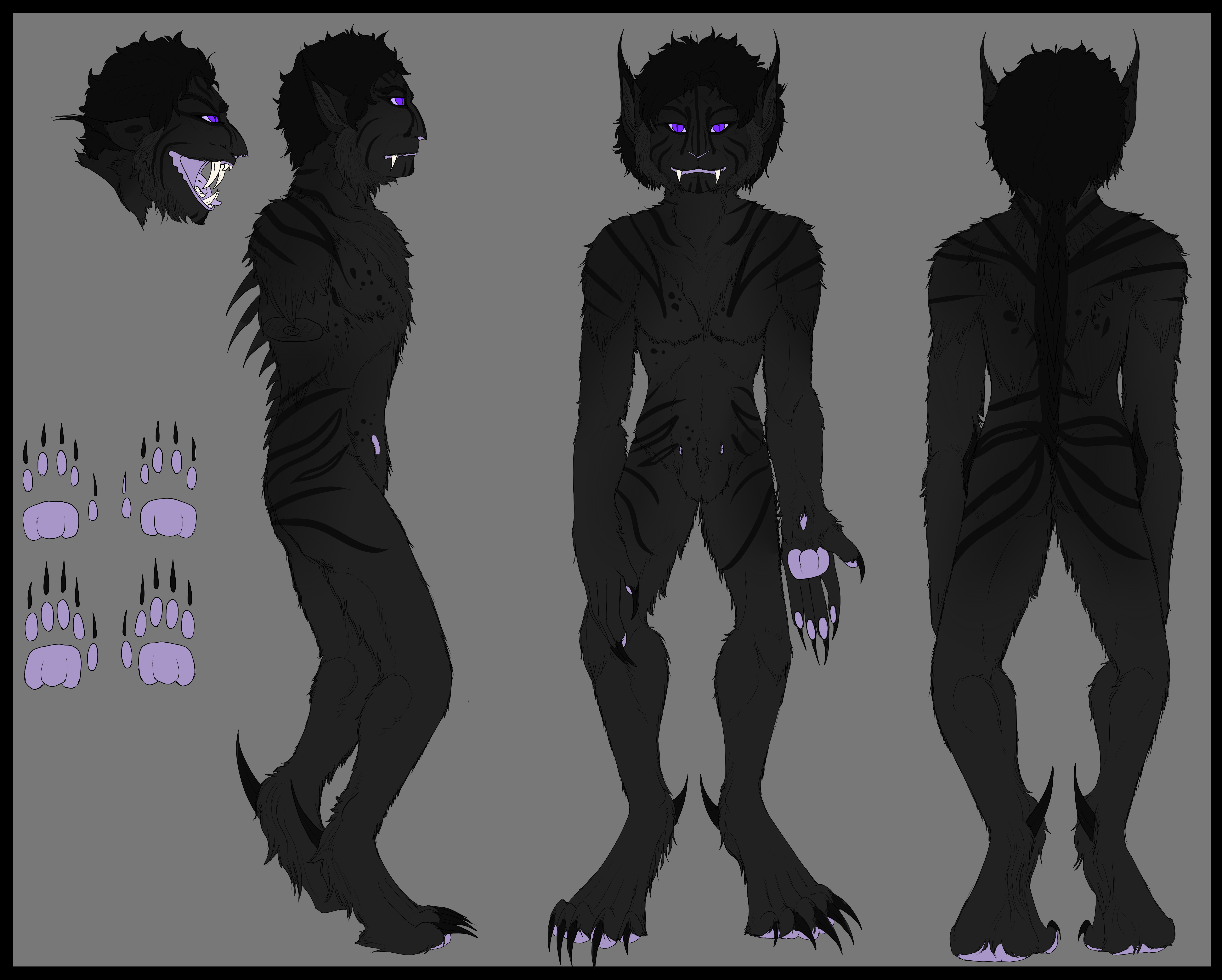
Kivuuli Cross (Kivuuli Subtype)
It is not uncommon for the breeds to mix and create cross breeds.
When a Standard Kivuuli mixes with any other breed, the natural black color often comes out stronger, while the breed's build usually remains noticeable.
When a Dykuma and Arctic Kivuuli mix, the offspring usually takes after the build of the Arctic Kivuuli, but with larger ears and a sleeker coat of fur. They do not come out looking like a Zanzibar. Zanzis came out after many generations of the genes mixing and the Kivuuli adapting to its environment.
When Dykuma and Met'saa mix, they do not just come out looking like a Kaplan, since Kaplan are another that ended up starting as a crossbreed, but adapting and becoming their own thing. The Dykuma/Met'saa mix usually comes out similar in build to the Dykuma, with much thinner fur than the Met'saa. Often has more Met'saa like markings but slightly more on the golden/yellow side of the spectrum.
The color of an Ember is bred out fairly quickly, though the slightly elongated fangs do stick around a while. Embers and Dykuma came from the same common ancestor, a branch of standard Kivuuli with thinner coats.
Lippizan, when mixing with other breeds, are bred out quickly, though the first generation often takes on the build of the one bred with, and the unique white coloration of the Lippizan.
Standard and Maltese tend to follow the Maltese coloration more than the standard coloration, since the Maltese gene has gotten very strong in the generations that have passed, though the Maltese/Standard mix is usually darker than a full Maltese, and slightly less likely to be a herm.
Same for when Maltese mix with other variants. They often take on the build of the other breeds, but a little thicker with a lot more fur, and take on that unique blue coloration.
Maltese, after all, are known for the extra fluffy and dense fur, being the absolute softest of the variants